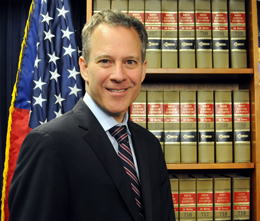 Today, Oct. 28, Drop-Off Sites Across New York State Will Provide A Safe And Responsible Way To Dispose Of Unused Prescription Drugs
Today, Oct. 28, Drop-Off Sites Across New York State Will Provide A Safe And Responsible Way To Dispose Of Unused Prescription Drugs
Safe Disposal Is Important: Research Shows A Majority Of Abused Prescription Drugs Were Obtained From Family And Friends
In a video message, New York Attorney General Eric T. Schneiderman called on New Yorkers to participate in National Prescription Drug Take Back Day today, bringing their unused prescription medication to safe, convenient, and secure designated take-back sites and drop boxes across the state. The service is free and anonymous. New Yorkers can find a site near them by visiting TakeBackDay.DEA.gov and using the “Collection Site Locator.” They can also find additional, year-round take-back sites through a search tool on the DEA’s website.
“One of the main ways that people are initially exposed to opioids is through leftover prescriptions belonging to their friends or their family. That means addiction can start right in your medicine cabinet. But we can all take a simple step to change that,” said Attorney General Eric Schneiderman. “Today, pharmacies, government agencies, and nonprofits across New York will set up designated drop-off sites where you can safely dispose of your unused prescriptions—whether opioids or other drugs. To find a site near you, please head to TakeBackDay.DEA.gov. New Yorkers often ask me what they can do about this crisis and this is really of one of the simplest and best things you can do to help us and your fellow New Yorkers. Let’s make a difference together.”
Watch Attorney General Schneiderman’s full message to New Yorkers on Take Back Day.
According to the 2015 National Survey on Drug Use and Health, 6.4 million Americans abused controlled prescription drugs, and a majority of them obtained the drugs through friends and family, making efforts like Take Back Day an especially important way to curb overdoses and addiction in New York.
Attorney General Schneiderman led the effort to enact the Internet System for Tracking Over-Prescribing Act, or I-STOP, that, in addition to creating a real-time prescription monitoring system, also made medication drop boxes available year round for the safe and legal disposal of unused prescription drugs.
Since taking office, Attorney General Schneiderman has launched a multi-levered strategy to tackle New York’s evolving opioid epidemic:
- With a bipartisan coalition of 41 Attorneys General from across the country, demanding information and documents from the nation’s major opioid manufacturers and distributors, part of a multistate investigation into whether the companies engaged in any unlawful practices in the marketing and distribution of prescription opioids.
- Obtaining settlements with major domestic and global health insurers including Cigna, Anthem, and Empire BlueCross BlueShield (BCBS), which insure over 4 million New Yorkers, to remove barriers to life-saving treatment for opioid use disorder. The agreements put an end to the insurers’ policy of requiring prior authorization for medication-assisted treatment (“MAT”), which can lead to significant delays for patients seeking relief from addiction.
- Launching the Community Overdose Prevention (“COP”) program, a life-saving initiative that enabled state and local law-enforcement officers in the state of New York to carry naloxone, the extremely effective heroin antidote that can immediately reverse the effects of an opioid overdose. Since the program’s implementation in April 2014, more than 100 overdoses were reversed using kits provided by the COP program, which distributed over 27,000 kits across the state.
- Obtaining an agreement with Amphastar Pharmaceuticals, to cut and cap the price of naloxone for all agencies in New York State, reducing the price of naloxone by nearly 20 percent.
- Enforcing Mental Health Parity Laws to reach agreements with health insurance companies, requiring them to implement sweeping reforms in their administration of behavioral health benefits, in particular relating to medical management practices, coverage of residential treatment for substance abuse, and co-pays for outpatient treatment, and to submit regular compliance reports. The agreements ultimately provided over $2 million in restitution for members whose claims for were improperly denied.
- Successfully prosecuting more than ten licensed prescribers including operators of “pill mills” and other unlawful practices for crimes related to improper opioid prescriptions.
- Cracking down on drug trafficking networks that traffic opioids into communities around the state. The Attorney General’s Organized Crime Task Force (OCTF) has now taken down 25 large drug trafficking gangs, made more than 580 felony narcotics arrests, and seized more than $1.5 million and more than 2,000 pounds of illegal drugs since 2011. In the past several months alone, Attorney General Schneiderman’s SURGE (Suburban and Upstate Response to the Growing Epidemic) Initiative has resulted in 260 alleged traffickers and dealers taken off the streets.

